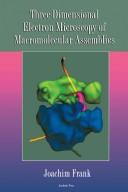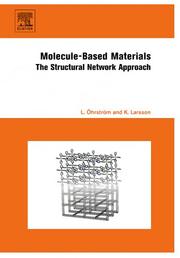| Listing 1 - 10 of 28 | << page >> |
Sort by
|
Book
ISBN: 0128095059 0128093110 9780128095058 9780128093115 Year: 2016 Publisher: London, [England] : Academic Press,
Abstract | Keywords | Export | Availability | Bookmark
 Loading...
Loading...Choose an application
- Reference Manager
- EndNote
- RefWorks (Direct export to RefWorks)
Perception of Pixelated Images covers the increasing use of these images in everyday life as communication, socialization, and commerce increasingly rely on technology. The literature in this book is dispersed across a wide group of disciplines, from perception and psychology to neuroscience, computer science, engineering, and consumer science. The book summarizes the research to date, answering such questions as, What are the spatial and temporal limits of perceptual discrimination of pixelated images?, What are the optimal conditions for maximizing information extracted from pixelated images?, and How does the method of pixelation compromise or assist perception? Integrates research from psychology, neuroscience, computer science, and engineering Explains how the process of perception works for pixelated images Identifies what assists and hinders perception, including the method of pixelation Discusses the limits of perception of pixelated images--
Three-dimensional imaging. --- Digital images. --- 3-D imaging --- 3D imaging --- Three-dimensional imaging systems --- Three-dimensional imaging techniques --- Three-dimensional visualization --- Visualization, Three-dimensional --- Imaging systems --- Digitized images --- Images, Digital --- Pictures
Book
ISBN: 0128155469 0128153091 9780128155462 9780128153093 Year: 2019 Publisher: London : Academic Press,
Abstract | Keywords | Export | Availability | Bookmark
 Loading...
Loading...Choose an application
- Reference Manager
- EndNote
- RefWorks (Direct export to RefWorks)
3D Data Acquisition for Bioarchaeology, Forensic Anthropology, and Archaeology serves as a handbook for the collection and processing of 3-D scanned data and as a tool for scholars interested in pursuing research projects with 3-D models. The book's chapters enhance the reader's understanding of the technology by covering virtual model processing protocols, alignment methods, actual data acquisition techniques, basic technological protocols, and considerations of variation in research design associated with biological anthropology and archaeology.
Archaeology --- Computer simulation. --- Data processing. --- Three-dimensional imaging. --- 3-D imaging --- 3D imaging --- Three-dimensional imaging systems --- Three-dimensional imaging techniques --- Three-dimensional visualization --- Visualization, Three-dimensional --- Imaging systems --- Archeology --- Anthropology --- Auxiliary sciences of history --- History --- Antiquities

ISBN: 1281743615 9786611743611 0080525814 0122650409 Year: 1996 Publisher: San Diego : Academic Press,
Abstract | Keywords | Export | Availability | Bookmark
 Loading...
Loading...Choose an application
- Reference Manager
- EndNote
- RefWorks (Direct export to RefWorks)
Three-Dimensional Electron Microscopy of Macromolecular Assemblies is the first systematic introduction to single-particle methods of reconstruction. It covers correlation alignment, classification, 3D reconstruction, restoration, and interpretation of the resulting 3D images in macromolecular assemblies. It will be an indispensable resource for newcomers to the field and for all using or adopting these methods.Key Features* Presents methods that offer an alternative to crystallographic techniques for molecules that cannot be crystallized* Describes methods that have bee
Periodical
Abstract | Keywords | Export | Availability | Bookmark
 Loading...
Loading...Choose an application
- Reference Manager
- EndNote
- RefWorks (Direct export to RefWorks)
Book
ISBN: 012818129X 0128181281 9780128181294 9780128181287 Year: 2020 Publisher: Waltham, Massachusetts : Elsevier,
Abstract | Keywords | Export | Availability | Bookmark
 Loading...
Loading...Choose an application
- Reference Manager
- EndNote
- RefWorks (Direct export to RefWorks)
Book
ISBN: 9780323653923 0323653928 9780323653916 032365391X Year: 2020 Publisher: [Place of publication not identified] : Elsevier,
Abstract | Keywords | Export | Availability | Bookmark
 Loading...
Loading...Choose an application
- Reference Manager
- EndNote
- RefWorks (Direct export to RefWorks)
Book
ISBN: 0128030100 0128030305 9780128030301 9780128030103 Year: 2017 Publisher: London : Academic Press,
Abstract | Keywords | Export | Availability | Bookmark
 Loading...
Loading...Choose an application
- Reference Manager
- EndNote
- RefWorks (Direct export to RefWorks)
3D Bioprinting: Fundamentals, Principles and Applications provides the latest information on the fundamentals, principles, physics, and applications of 3D bioprinting. It contains descriptions of the various bioprinting processes and technologies used in additive biomanufacturing of tissue constructs, tissues, and organs using living cells. The increasing availability and decreasing costs of 3D printing technologies are driving its use to meet medical needs, and this book provides an overview of these technologies and their integration. Each chapter discusses current limitations on the relevant technology, giving future perspectives. Professor Ozbolat has pulled together expertise from the fields of bioprinting, tissue engineering, tissue fabrication, and 3D printing in his inclusive table of contents. Topics covered include raw materials, processes, machine technology, products, applications, and limitations. The information in this book will help bioengineers, tissue and manufacturing engineers, and medical doctors understand the features of each bioprinting process, as well as bioink and bioprinter types. In addition, the book presents tactics that can be used to select the appropriate process for a given application, such as tissue engineering and regenerative medicine, transplantation, clinics, or pharmaceutics. Describes all aspects of the bioprinting process, from bioink processing through design for bioprinting, bioprinting techniques, bioprinter technologies, organ printing, applications, and future trends Provides a detailed description of each bioprinting technique with an in-depth understanding of its process modeling, underlying physics and characteristics, suitable bioink and cell types printed, and major accomplishments achieved thus far Explains organ printing technology in detail with a step-by-step roadmap for the 3D bioprinting of organs from isolating stem cells to the post-transplantation of organs Presents tactics that can be used to select the appropriate process for a given application, such as tissue engineering and regenerative medicine, transplantation, clinics, or pharmaceutics
Book
ISBN: 1003034136 0367472090 9780367472078 0367472074 9780367472092 1000554309 Year: 2022 Publisher: Taylor & Francis
Abstract | Keywords | Export | Availability | Bookmark
 Loading...
Loading...Choose an application
- Reference Manager
- EndNote
- RefWorks (Direct export to RefWorks)
"Archaeological 3D GIS provides archaeologists with a guide to explore and understand the unprecedented opportunities for collecting, visualising and analysing archaeological datasets in three dimensions. With platforms allowing archaeologists to link, query and analyse in a virtual, georeferenced space information collected by different specialists, the book highlights how it is possible to re-think aspects of theory and practice which relate to GIS. It explores which questions can be addressed in such a new environment and how they are going to impact the way we interpret the past. By using material from several international case studies such as Pompeii, Çatalhöyük, as well as prehistoric and protohistoric sites in Southern Scandinavia, this book discusses the use of the third dimension in support of archaeological practice. This book will be essential for researchers and scholars who focus on archaeology and spatial analysis, and is designed and structured to serve as a textbook for GIS and digital archaeology courses"-- Provided by publisher.
Periodical
Year: 2002 Publisher: Barcelona : Centre de Visió per Computador,
Abstract | Keywords | Export | Availability | Bookmark
 Loading...
Loading...Choose an application
- Reference Manager
- EndNote
- RefWorks (Direct export to RefWorks)

ISBN: 9780444521682 0444521682 0080459854 9780080459851 9786610641819 1280641819 Year: 2005 Publisher: New York : Elsevier,
Abstract | Keywords | Export | Availability | Bookmark
 Loading...
Loading...Choose an application
- Reference Manager
- EndNote
- RefWorks (Direct export to RefWorks)
The properties of a material depend not only on the specific atoms and molecules it contains, but also on the arrangement of these in space. Many of these three-dimensional arrangements are described as ""3D-nets"" or ""3D-networks"". Molecule-Based Materials: The Structural Network Approach is about the synthesis, description, nomenclature and analysis of such nets and the relation of the nets to the physical properties of the materials. It introduces the mathematics, and includes a short guide to programs useful for retrieving, analysing and naming nets. Complete with illustrations
Crystallography, Mathematical. --- Nets (Mathematics) --- Three-dimensional imaging. --- 3-D imaging --- 3D imaging --- Three-dimensional imaging systems --- Three-dimensional imaging techniques --- Three-dimensional visualization --- Visualization, Three-dimensional --- Imaging systems --- Moore-Smith convergence --- Net equations --- Net methods (Mathematics) --- Convergence --- Set theory --- Topology --- Crystallography --- Crystallometry --- Mathematical crystallography --- Crystals --- Lattice theory --- Mathematics --- Mathematical models
| Listing 1 - 10 of 28 | << page >> |
Sort by
|

 Search
Search Feedback
Feedback About UniCat
About UniCat  Help
Help News
News